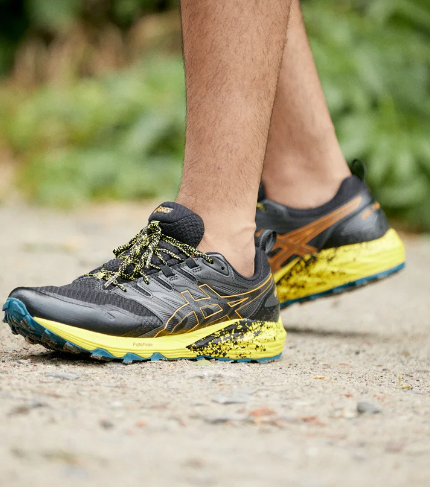Mastering Brick Workouts: Seamless Bike-to-Run Transitions for Triathletes
Introduction
If you’re training for a triathlon, you already know that the bike-to-run transition can make—or break—your race performance. That moment where your legs feel like jelly, yet you still have miles to go on foot, is notorious. Enter brick workouts: combined bike-run sessions designed to simulate race day and teach your body (and mind) to switch gears efficiently. In this post, you’ll learn what brick workouts are, why they’re essential, and how to incorporate them into your training plan for smoother transitions and faster overall splits.

What Are Brick Workouts?
A “brick” workout is simply back-to-back training in two disciplines—most commonly cycling immediately followed by running. The term “brick” is often explained two ways:
- Muscle rigidity: You emerge from the bike with stiff legs—like bricks—so you learn to loosen up quickly.
- Building blocks: Each discipline “builds” on the previous, constructing the full triathlon experience.
Key Benefits of Brick Workouts
- Neuromuscular Adaptation
- Trains your nervous system to fire the proper muscle groups during the awkward bike-to-run shift.
- Pacing Practice
- Teaches you how hard you can push on the bike without compromising your run legs.
- Mental Toughness
- Familiarizes you with the discomfort of transition; reduces surprise on race day.
- Race Simulation
- Mimics the flow of event day, from mounting your bike to pounding the pavement.
How to Structure Your Brick Sessions
- Warm-Up (15–20 minutes)
- Easy spin on the bike, followed by dynamic mobility drills like leg swings and hip circles.
- Bike Segment
- Base bricks: 45–60 minutes at endurance pace.
- Intensity bricks: 20–30 minutes including intervals (e.g., 5 × 3-minute efforts at threshold).
- Quick Transition
- Rack your bike, swap shoes, and head out. Keep the transition practice realistic—time yourself.
- Run Segment
- Post-ride jog: 10–20 minutes at easy effort for adaptation.
- Brick intervals: 2–4 × 5 minutes at race-pace effort, with 2 minutes easy in between.
- Cool-Down
- 5–10 minutes easy running, followed by thorough stretching and foam-rolling.
Sample Brick Workouts
| Workout Type | Bike Portion | Run Portion |
|---|---|---|
| Endurance Brick | 60 min @ Zone 2 (steady aerobic pace) | 15 min @ Zone 1–2 (easy jog) |
| Speed Brick | 10 min warm-up; 6 × 2 min @ Zone 4 w/2 min easy | 6 × 2 min @ 5K pace w/2 min easy |
| Threshold Brick | 5 min warm-up; 3 × 8 min @ Zone 3 w/4 min easy | 3 × 5 min @ half-marathon pace w/3 min easy |
Nutrition & Hydration Tips for Bricks
- On-Bike Fuel: Practice taking gels or bars during your bike ride to know what sits well in your stomach.
- Race-Day Hydration: Sip water or electrolyte drink on the bike, and have a small bottle or handheld on your run.
- Pre-Brick Snack: 30–60 min before your session, aim for 200–300 kcal of carbs + a bit of protein (e.g., banana with nut butter).
- Post-Brick Recovery: Within 30 min, consume a 3:1 carb-to-protein recovery shake or meal to replenish glycogen and kickstart muscle repair.
Gear Recommendations
- Race-Ready Bike Setup: Clip-on aerobars to practice your true race position.
- Quick-Change Run Shoes: Choose a lightweight pair with minimal laces (elastic or lock-lace systems) for faster transitions.
- Transition Mat & Gear Bag: Layout your shoes, helmet, sunglasses, and nutrition exactly as you will on race day.
- Heart Rate Monitor or Power Meter: Crucial for pacing both bike and run segments accurately.
Common Mistakes to Avoid
- Skipping the Transition Practice: Simply doing bike and run separately won’t prepare you for the shock of shifting muscle recruitment.
- Overdoing Intensity: Hard bricks are valuable, but too many can lead to fatigue or injury. Balance with easy recovery sessions.
- Ignoring Nutrition: Your stomach needs practice just like your legs—simulate your race-day fueling strategy.
- Poor Bike Position: Training in a different handlebar setup than race day will throw off your neuromuscular adaptation.
Conclusion
Brick workouts are the cornerstone of any solid triathlon plan. By systematically combining cycling and running sessions, you’ll desensitize your legs to the infamous “heavy” feeling, dial in your pacing, and gain confidence for race day. Start incorporating one brick per week into your training—vary the length and intensity as you build toward your A-race. With consistency, you’ll step off the bike ready to crush your run without skipping a beat!
Mastering Brick Workouts: Seamless Bike-to-Run Transitions for Triathletes Read More »






